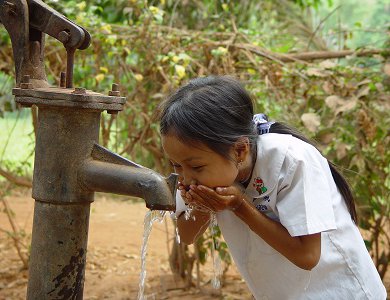
Whenever Nepal’s policymakers and politicians start talking about Nepal’s water, they start from saying that Nepal is the richest country in water resources after Brazil. Nobody knows how much water is available in Brazil and how much is available in Nepal.
At a time when over 30 percent of population does not have safe water to drink, no irrigation in over 90 percent of land and almost 12 hours of load-shedding a day, nobody understands the reason why people are harping on this mythical comparison to make their point. This is one of the most misused words in the context of Nepal. Nepalese policymakers and politicians do not get tired of projecting Nepal as one of the richest countries for water. However, the real situation is very different.
According to the Water and Energy Commission Secretariat, the surface water available in the country is estimated to be about 225 billion cubic meter (BCM) per annum or equivalent to an average flow of 7125 cusec meter, out of which only 15 BCM per annum is in use.
Despite the government’s data, water is still scarce for drinking. Women have to use a lot of time to fetch their buckets of water. The recent effects of changing weather have drastically impacted the availability of water.
According to a study conducted by Water Aid Nepal, water, sanitation and hygiene-related ailments and diseases such as initial worm, diarrhea and dysentery still fall under the 10 most prevalent diseases in Nepal. Although eighty-five percent of households have access to drinking water, 11 percent of these rely on non-improved sources of drinking water (unprotected wells, unprotected springs, tankers). The majority of households (82 percent) do not treat drinking water. Only 46 percent of households in urban areas treat drinking water compared to 13 percent in rural areas.
The main source of drinking water for 48 percent of the total households is tap/piped water, 35 percent rely on tube well and hand pump, five percent on spout, 6 percent on uncovered well or kuwa.
Although official documents term Nepal as a country with abundant water resources, Nepalese are yet to have adequate water for drinking, irrigation and other purposes. The water distribution is so poor and unequal. The climate change is likely to worsen the situation.
Given this scenario, Nepal is celebrating National Water Week 2015 and Meteorological Day. With a theme of Water and Sustainable Development, Nepal has already announced a week long Nepal National Water Week 2015 for organizing various programs.
Like all other parts of the world, fresh water is shrinking in Nepal. With the growing population, the demand of water is high for drinking, irrigation and industrial use. The current challenges are for Nepal to make sustainable use of fresh water resources.
“Although Nepal has abundant water in data, a sustainable use of water is very important now. We have to make a balanced use of water in various areas, including drinking, irrigation and industrial purposes,” said gajendra Kumar Thakur, secretary at the Water and Energy Commission. "We have to work out the plan for long term use of water.”
Along with the Water and Energy Commission, Small Earth Nepal, a NGO, is part of the program. Small Earth Nepal will support the government to make the week successful. “One of the major objectives of the week is to raise awareness both on the potential for increased cooperation and on the challenges facing water management in light of the increase in demand for water access, allocation and service,” said engineer Mahendra Gurung, member secretary of the organizing committee.
The organizers will focus on UN call for Water and Sustainable Development. The program will make efforts to intensify discussion on water related issues focusing on water and sustainable management of water resources in Nepal.
Organizers talk about the need of coordination among themselves on water related issues. However, there are over a dozen organizations working in water sector and coordination among them is rare. After splitting the Ministry of Water Resources, there is a conflict now between Ministry of Energy and Irrigation.
- TANAHU HYDROPOWER PROEJCT: A Significant Achievement
- Apr 15, 2024
- AMBASSADOR HANAN GODAR: Sharing Pain With A Nepali Family
- Mar 30, 2024
- VISIT OF KfW AND EIB TO NEPAL : Mission Matters
- Mar 25, 2024
- NEPAL BRITAIN SOCIETY: Pratima Pande's Leadership
- Mar 24, 2024
- NEPAL ARMY DAY: Time To Recall Glory
- Mar 15, 2024
















